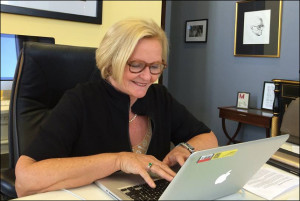By Jim Ellis
 Oct. 10, 2018 — There is great discussion within political circles about the importance of early voting and whether an advantage can ascertained for one party or another, or if it is a predictor of the associated election that is decided in the succeeding vote.
Oct. 10, 2018 — There is great discussion within political circles about the importance of early voting and whether an advantage can ascertained for one party or another, or if it is a predictor of the associated election that is decided in the succeeding vote.
As more states adopt early voting – 37 currently have enacted some form of the balloting process – it is still unclear as to whether it brings more voters into the election cycle. Offering elongated voting times does make ballot casting more convenient, no doubt, and Democrats usually are more prodigious in their use of the procedure, but there are no long-term patterns that suggest the use of early voting actually leads to more Democratic victories.
The early voting calendar is also elongating the election process, and the periods for such ballot casting are getting longer. Right now, pre-election voters in Colorado, Illinois, Minnesota, New Jersey, North and South Dakota, Vermont, and Wyoming already are casting their Nov. 6 ballots. This week, Arizona, California, Indiana, Iowa, Maine, Montana, Nebraska, and Ohio voters can join them. The states with the latest early voting start dates are Florida (Oct. 27), Maryland (Oct. 25), and West Virginia (Oct. 24).
Those who exercise their right to vote early, however, do miss the critical part of the advertising campaign, which may or may not cause them to re-think and change their votes, and it is clear that early voting has altered the campaign cycle. Thus, it is relatively clear that the more decided voters, possibly meaning the most partisan from the various parties, are the ones who generally cast their votes before Election Day.
The only states that carry early voting through Election Day itself are the three where all votes are cast via mail: Colorado, Oregon, and Washington. All others end early voting before the official Election Day, which is Nov. 6 this year.




